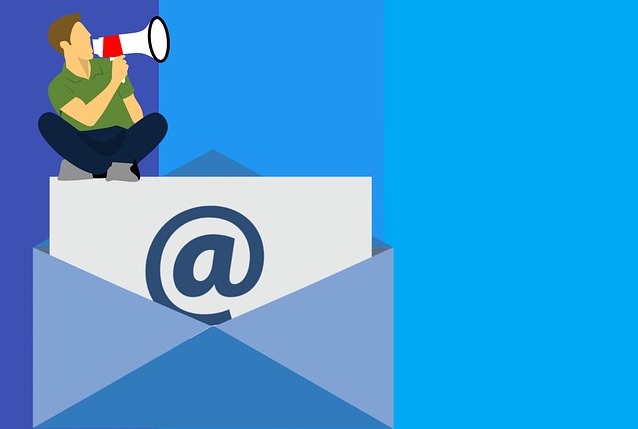5 Ways Authors Can Find Out Who is Buying Their Books
Authors must find out who their readers are in order to build profitable lasting relationships with them. Identifying readers who buy books from bookstores and independent distributors is usually impossible. The solution? Bonus content online.

One of the biggest challenges authors face is finding out who's buying their books.
Unless the authors are selling their books themselves, which is usually very time-consuming, it is usually impossible for authors to create relationships with readers who purchase their books from bookstores and independent distributors.
Yet, an author's future profits depend on their ability to identify their readers!
It is imperative that authors find out who is buying their books, and obtain their permission to re-contact them via e-mail. This is the only way authors can build the profitable lasting reader relationships that pave the way for them to cost-effectively market future books, information products, and services.
Most authors are content to simply list their website e-mail address in their author profile or on the back page of their book. This is not enough. Merely listing a website address fails to provide an incentive for readers to visit the author's website and submit their name and e-mail address.
The following are some far more effective ideas for authors to use to obtain their reader's name and e-mail address.
Bonus content
The best way for authors to find out who's buying their books is to offer readers bonus content.
Bonus content is typically offered to readers who register their name and e-mail address. (Other options are available, of course, such as asking readers to enter a password that appears on a specific page in their book.)
Bonus content can take several forms, including:
- Exercises. Because of the small size of most books, and an unwillingness to write in a book, most readers fail to fill-out the exercises and worksheets in the book. Thus, one of the best ways you can serve your readers better and find out who they are is to offer downloadable versions of the exercises, questions, and worksheets in your book. Each exercise or set of questions can be accompanied by a description of the page where readers can download and print actual size versions of the forms or worksheets.
- Updated information. Using today's sophisticated online technology, authors can create "reader only" pages of their blogs and websites where registered readers can download files containing more in-depth information about the ideas and resources than available on the public pages of the author's website. Premium-content resources can include Adobe Acrobat PDF files, audios, videos, as well as software templates for use with word processing and spreadsheet software.
- Assessments. Bonus content pages can also contain interactive exercises and assessments. After readers complete and submit them, these assessments can score the readers progress or understanding of each chapter. Assessment scores are typically returned via e-mail.
- Teaching tools. If an author's books are suitable for group discussion, the bonus content pages can include downloadable discussion guides or scripts for discussion leaders. If the books are suitable for teaching or training, bonus content can include downloadable presentation visuals, exercises, assignments, and group projects.
- Reader surveys. These can yield important information about what readers liked, and what they found lacking, in the current book, as well as identify questions and topics that authors can address in future books and information products.
Other possibilities
Authors can also use bonus content as an incentive to encourage online book purchases. Bonus content can be made available after the reader forwards proof of purchase, such as an e-mailed receipt or order confirmations from an online bookstore during specified period of time.
There's virtually no limit to the ways authors can use today's online list-building tools to find out who their readers are. The technology is relatively easy to implement.
The hard part is for authors to identify the best incentives to offer their readers in to obtain their permission to keep in touch with them and prime them for future purchases.
As you explore the books available in your field, and the websites of their authors, see if you can identify the techniques they are using to find out who is buying their books and how they are building relationships with their readers.
Read These Next
Should Authors Record and Produce Their Own Audiobooks?
As the author, should you record your own audiobook? For some, this is a scary proposition. For others, an exiting idea. There are a lot of of things to consider before making your decision. This article will walk you through several of them.
How Authors Can Use Listmania to Promote Their Book
The internet provides a dizzying array of book marketing options that authors can utilize to promote their books. One that is often overlooked is Amazon’s Listmania lists. Here’s a how-to, step by step that’ll show you how to create a Listmania list on Amazon.
How AI Could Destroy the Future of Publishing
In a world where technology continues to revolutionize various industries, artificial intelligence is leaving its mark on the book publishing and bookselling sectors. While some of these changes could be positive or neutral, it is also possible to see a future where changes due to AI could go horribly wrong.







 80/20 Sales and Marketing: The Definitive Guide to Working Less and Making More
80/20 Sales and Marketing: The Definitive Guide to Working Less and Making More The Book on Sales and Marketing: Expert Marketing for the People
The Book on Sales and Marketing: Expert Marketing for the People Marketing, Sales and Service with AI: Creating an Incredible User Experience at Every Touchpoint
Marketing, Sales and Service with AI: Creating an Incredible User Experience at Every Touchpoint Marketing Made Simple: A Step-by-Step StoryBrand Guide for Any Business (Made Simple Series)
Marketing Made Simple: A Step-by-Step StoryBrand Guide for Any Business (Made Simple Series) Sales Pitch: How to Craft a Story to Stand Out and Win
Sales Pitch: How to Craft a Story to Stand Out and Win Using Behavioral Science in Marketing: Drive Customer Action and Loyalty by Prompting Instinctive Responses
Using Behavioral Science in Marketing: Drive Customer Action and Loyalty by Prompting Instinctive Responses 1-Page Marketing Plan
1-Page Marketing Plan Empowering Marketing and Sales with HubSpot: Take your business to a new level with HubSpot's inbound marketing, SEO, analytics, and sales tools
Empowering Marketing and Sales with HubSpot: Take your business to a new level with HubSpot's inbound marketing, SEO, analytics, and sales tools This Is Marketing: You Can't Be Seen Until You Learn to See
This Is Marketing: You Can't Be Seen Until You Learn to See The Little Red Book of Selling: 12.5 Principles of Sales Greatness
The Little Red Book of Selling: 12.5 Principles of Sales Greatness